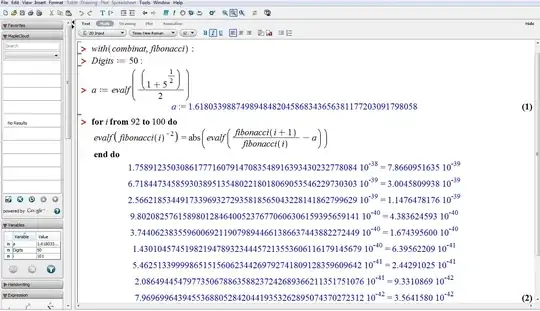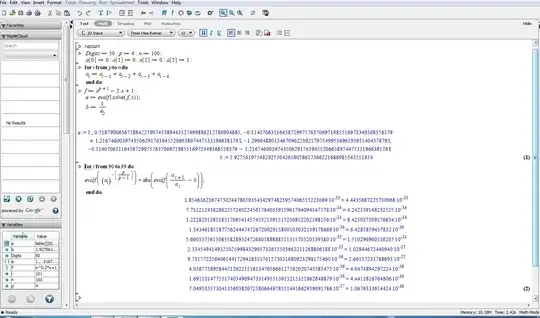We denote the $n$th term of Fibonacci number with $F_n$. Assume that $\alpha=\frac{1+\sqrt{5}}{2}$. With simulation, I found the following relation between Fibonacci number and the golden section $$ \mid \frac{F_{n+1}}{F_{n}}-\alpha\mid \, \approx \, \frac{1}{(F_n)^2}~. $$ Is there a analytical method that we can proof the mentioned formula. I would greatly appreciate for any suggestions.
Edit: First I want to gratitude from Milo Brandt for nice answer. In continue, i want to generalize my question.
One of the most important generalization of the classical Fibonacci numbers is the Fibonacci $p$-step numbers that is defined as follows $$ \begin{equation}\label{cp26} F_n^{(p)}=F_{n-1}^{(p)}+F_{n-2}^{(p)}+\cdots+F_{n-p}^{(p)}\, . \end{equation} $$ With boundary conditions $$ F_{0}^{(p)}=0\quad , \quad F_{1}^{(p)}=0\quad ,\, \cdots\, ,\quad F_{p-2}^{(p)}=0\quad , \quad F_{p-1}^{(p)}=1\, . $$
We can get the limit value of Fibonacci $p$-step numbers by inverse of solution of equation $x^{p+1}-2\, x+1=0$ in the interval $(0,1)$. We denote the limit value of Fibonacci $p$-step numbers with $\alpha_p$. In fact, $\alpha_p$ is defined in the following form $$ \alpha_p=\displaystyle{\lim_{n\rightarrow\infty}}\quad \frac{F^{(p)}_{n+1}}{F^{(p)}_{n}}~. $$ The generalization of the above formula is $$ \mid \frac{F^{(p)}_{n+1}}{F^{(p)}_{n}}-\alpha_p\mid \, \approx \, {F^{(p)}_{n}}^{-{\displaystyle{(\frac{p}{p-1})}}}~. $$
For example for the case $p=4$, we have

